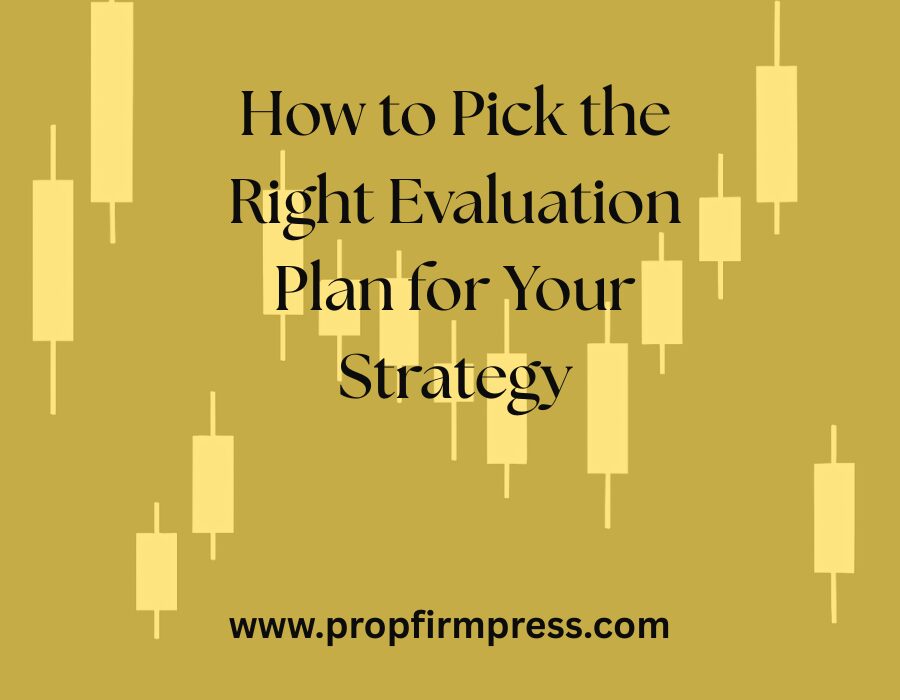All Evaluation Plans Aren’t Created Equal
The prop firm world offers dozens of evaluation structures—one-step, two-step, static drawdown, trailing drawdown, instant funding, and more. Choosing the wrong plan for your strategy can cost you time, money, and momentum. But with the right approach, you can find the ideal match that gives you the best odds of success.
Step 1: Define Your Trading Style
Are you a scalper, day trader, or swing trader? This one distinction will eliminate several plan types right away. For example:
- Scalpers prefer tighter spreads and fewer restrictions—firms like Earn2Trade or 5%ers may fit better
- Swing traders want longer hold periods—firms with overnight holds allowed and lower intraday risk rules work best
Step 2: Know Your Drawdown Comfort Zone
If you struggle with tight daily loss limits, avoid firms with aggressive risk caps. For example, Lucid Trading has no daily drawdown, while others like Prop Shop Traders offer higher cushion room due to one-step models. Match your risk tolerance to the drawdown rules.
Step 3: Compare Payout Structures
Instant funding plans offer quick payouts but often at higher costs. 2-phase plans may delay payout but provide longer consistency testing. If you want fast income, look at Funded Trading Plus. If you prefer long-term scaling, go with firms that offer phase-based increases.
Step 4: Evaluate the Evaluation
Some firms have relaxed evaluations—like allowing resets or free retries. Others have strict one-shot-only rules. Choose what motivates you best:
- If pressure motivates you, choose one-shot accounts with real risk
- If you prefer forgiving environments, go with firms that offer resets
Step 5: Check for Strategy Restrictions
Do you use hedging, copy trading, or EAs? Some firms ban these. Review the rulebook closely before you pay. You don’t want to pass the challenge only to be disqualified later. Use our guide at Prop Firm Press for firm-by-firm breakdowns.
Step 6: Look at Account Sizes and Leverage
If you’re trading small size, avoid firms with high leverage. If you’re confident with scaling, look for plans with 1:100 or higher leverage. Match the account size to your average trade risk and time horizon.
Step 7: Understand Scaling Plans
If your strategy depends on compounding capital over time, go with firms that offer a detailed scaling roadmap. Look for:
- Monthly growth requirements
- No daily loss limit
- Automatic account upgrades
This is often ideal for disciplined trend traders who focus on consistency.
Step 8: Analyze the Platform Offered
If you trade exclusively on NinjaTrader, check that the firm supports it. Not all futures firms do. Forex traders should look for MT4 or MT5 compatibility. Platform comfort reduces execution errors.
Step 9: Budget for Retakes
How many times are you willing to reset or retry? Some one-step plans are more expensive but offer unlimited resets. Others offer only one shot. Consider your risk tolerance and wallet size. If your strategy has high win rate, low frequency—you may need more time or more resets.
Step 10: Use a Matching Tool
Use the firm-matching calculator from Prop Firm Press to input your preferences and see which firm and plan fits you best. Don’t choose based on hype—choose based on your method.
Build Around Your Strengths
The perfect evaluation plan doesn’t exist—but the best plan for your strategy does. When you start with your own style, risk tolerance, and goals, you can filter the prop firm options down to a smart, informed choice. A good plan amplifies your edge. A bad plan punishes it. Make the choice wisely and let your strategy thrive.
